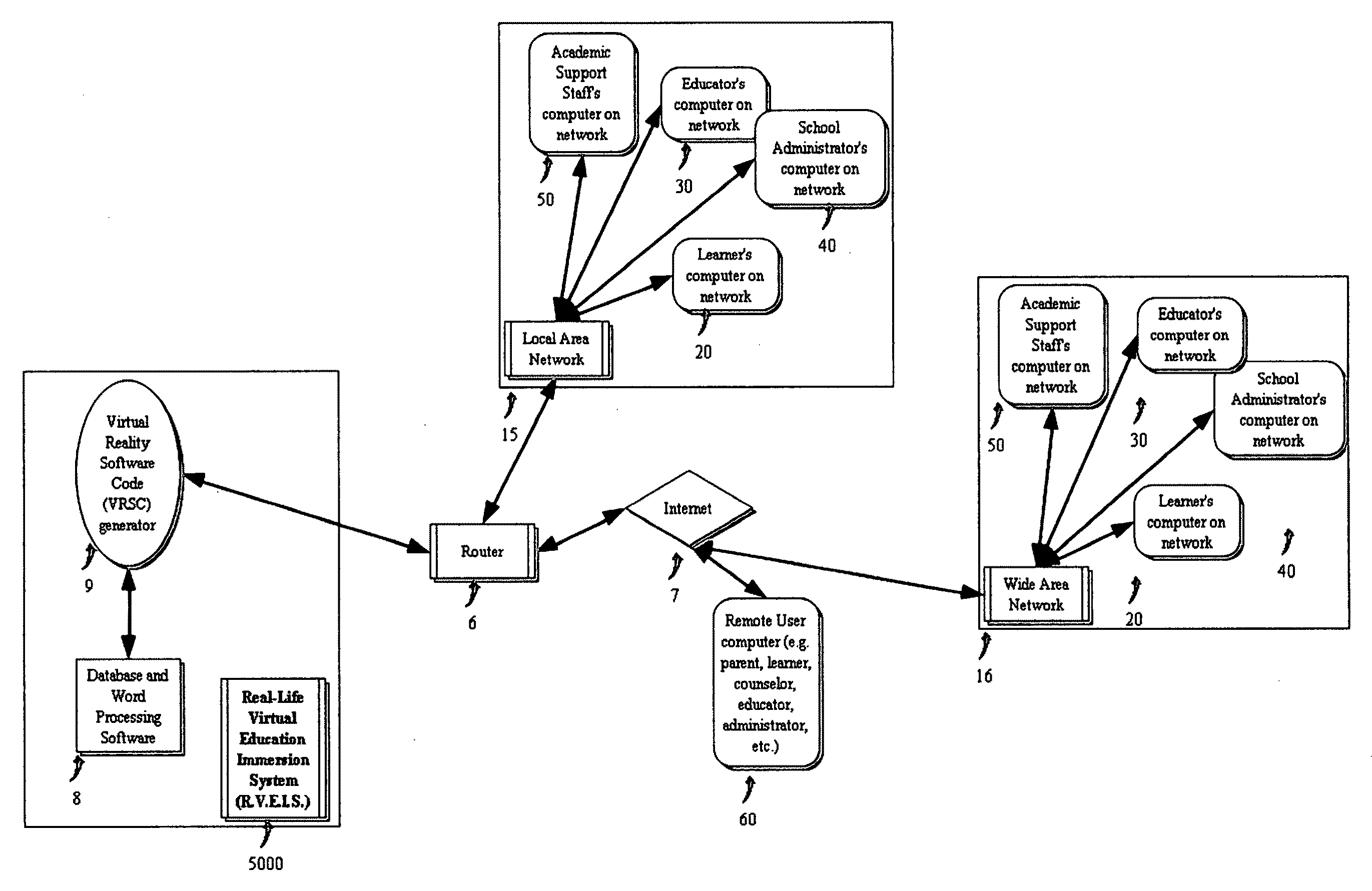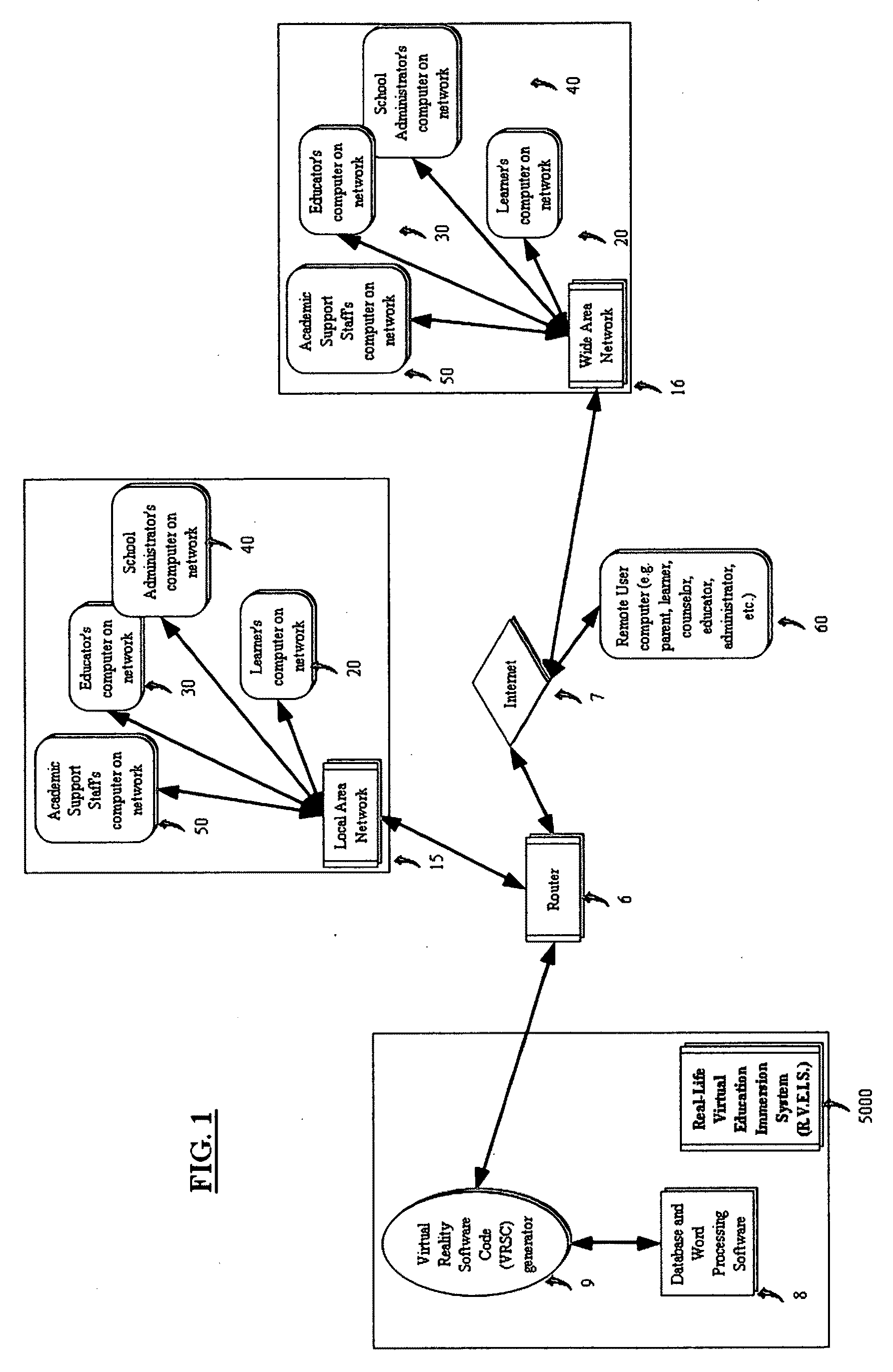Internet-based Pedagogical and Andragogical Method and System Using Virtual Reality
a virtual reality and learning method technology, applied in the field of education, can solve the problems of not enough to sustain long-term attentiveness, not enough to incorporate best practices, and not enough to sustain learner's attention, so as to increase the retention rate of students in the academic institution, enhance learner satisfaction with the online education process, and increase substantive interaction
- Summary
- Abstract
- Description
- Claims
- Application Information
AI Technical Summary
Benefits of technology
Problems solved by technology
Method used
Image
Examples
Embodiment Construction
[0025]In the following detailed description of the preferred embodiment, we refer first to FIG. 1, but it is to be understood that other embodiments of the system, and pathway configurations of the system, may be utilized without departing from the scope of the present invention.
[0026]In FIG. 1, a virtual reality software code (VRSC) generator (e.g. virtual reality modeling language) 9 and a related database 8 are integrated to form a Real-Life Virtual Immersion System (R.V.E.I.S.) 5000. R.V.E.I.S. provides instruction and academic administrative services in a virtual reality environment to a plurality of networked computer users connected via routers 6 on a local area network 15, or via the Internet 7 to a Wide Area Network to a Wide Area Network implemented in a client-server topolology 16 of computer users, or individual remote computer users 60. R.V.E.I.S. 5000 generates animated graphical representations of information contained in its related database 8 of course content accou...
PUM
 Login to View More
Login to View More Abstract
Description
Claims
Application Information
 Login to View More
Login to View More - R&D
- Intellectual Property
- Life Sciences
- Materials
- Tech Scout
- Unparalleled Data Quality
- Higher Quality Content
- 60% Fewer Hallucinations
Browse by: Latest US Patents, China's latest patents, Technical Efficacy Thesaurus, Application Domain, Technology Topic, Popular Technical Reports.
© 2025 PatSnap. All rights reserved.Legal|Privacy policy|Modern Slavery Act Transparency Statement|Sitemap|About US| Contact US: help@patsnap.com



